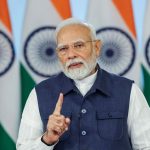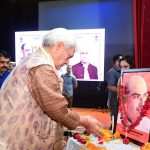The soldier of the Indian Army has always been its strength and the nation looks up to the soldier with hope and respect; exemplified by the dictum “institutions do not transform-its people do, platforms and organizations do not defend the country-people do, and units and formations do not sacrifice and take risks for the nation-people do.”
With an approximate strength of 1.3 million, the armed forces are one of the largest employers of human resources and in such a massive and unique organization, where a “Soldier” remains the key player, issues related to human resource management assume great significance. He was keeping this aspect in mind on the last day of the Wellness Support
Seminar 2022 solely dealt with the life of the soldier after his retirement from the Armed Forces and how to transition into a second career. To cover this issue talks were given by Maj Gen Sharad Kapoor, DG Resettlement, Maj Gen Ajay Singh Chauhan (Retd), MD AWPO and Lt Col Iqbal Singh (Retd), from Google India Ltd.
The armed forces are a volunteer service with people joining at their own will, knowing fully well about their early exit. Besides 1.3 million serving personnel, the armed forces also have approximately 24 lakh Ex-servicemen (ESM), with around 60,000 retiring soldiers joining these veterans yearly. A bulk of these soldiers retire at a very young age.
About 44 per cent of pensioners are in the age group of 40-50, 33 per cent in the 35-40 year age bracket, while 12 per cent of the people who leave the services are in the age group of 30-35 years.
These young, physically fit, skilled and disciplined men become pensioners very early in life and actually they are the ones who are paying an immense personal cost for keeping the Army young.
They make only sacrifices while they serve in field areas, and their early exit makes their second innings a challenging battle of uncertainty, which adversely impacts their families as well. Resolving this issue by optimally utilizing this well-trained and young workforce exiting the Services can yield multiple benefits. (ANI)








